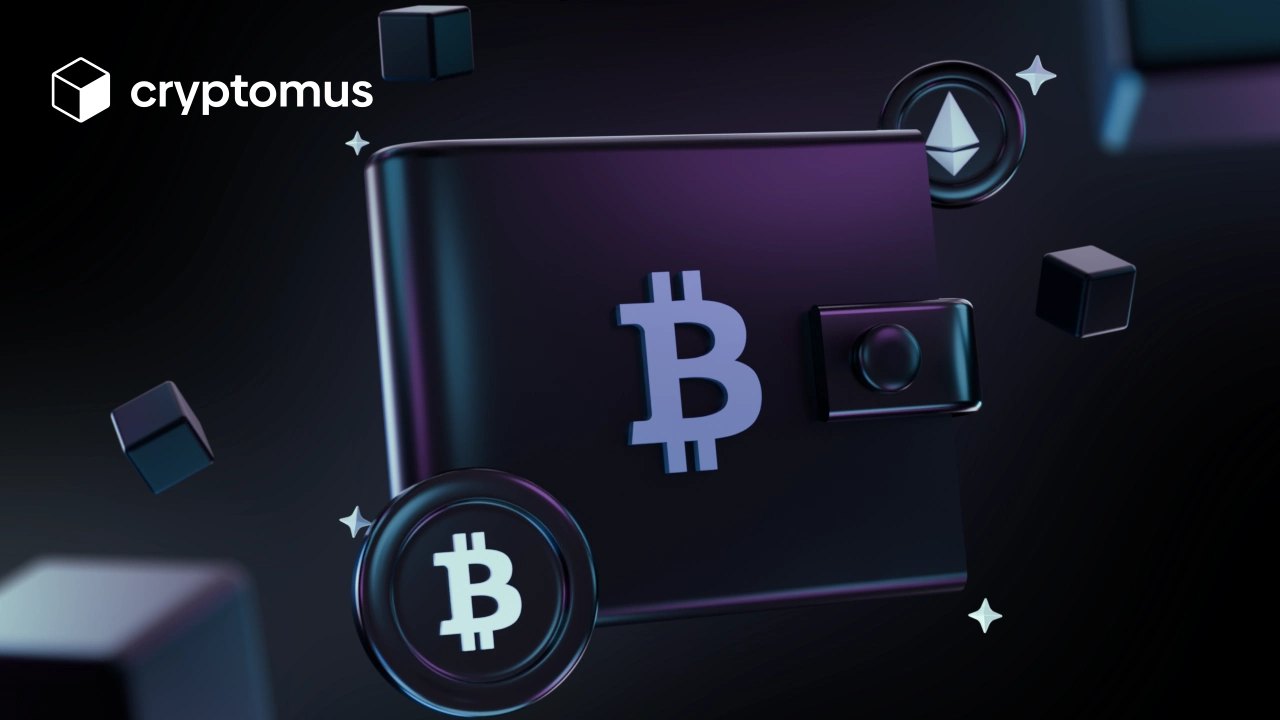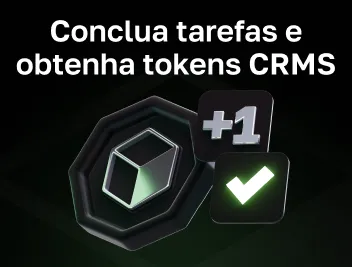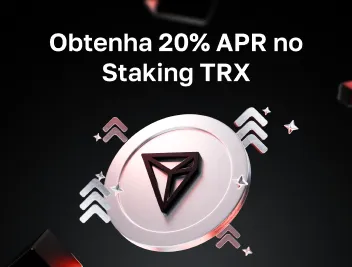
O que é uma Web3-wallet e como criá-la
No mundo em rápida evolução das tecnologias blockchain e descentralizadas, o termo "Web3 wallet" está ganhando atenção significativa. Um Web3 wallet é uma ferramenta digital que permite aos usuários armazenar, enviar e receber criptomoedas enquanto interagem com aplicações descentralizadas (dApps) em vários blockchains.
Neste guia, exploraremos o que é um Web3 wallet, por que você precisa dele, os diferentes tipos disponíveis, como criar um, os benefícios e os aspectos de segurança a considerar.
Por que você precisa de um Web3 Wallet?
Um Web3 wallet é essencial para quem deseja se envolver com aplicações descentralizadas (dApps) ou gerenciar criptomoedas. Ao contrário das wallets tradicionais, um Web3 wallet não é apenas para armazenar criptomoedas. Ele permite que você interaja diretamente com a blockchain, assine transações, participe de finanças descentralizadas (DeFi), crie NFTs e muito mais.
Web3 wallets são projetados para suportar uma ampla variedade de criptomoedas, dependendo das redes blockchain com as quais são compatíveis. Em um Web3 wallet, você pode armazenar uma ampla gama de criptomoedas, incluindo Ethereum (ETH) e seus tokens. Além disso, muitos Web3 wallets suportam tokens BEP-20 da Binance Smart Chain, Binance Coin (BNB), tokens Polygon (MATIC), tokens ERC-20 (Tether e LINK) e vários NFTs (ERC-721) representando ativos digitais únicos. Você também pode gerenciar ativos de outras blockchains, como Avalanche (AVAX) e Fantom (FTM), bem como Solana (SOL) e seus tokens associados. As criptomoedas específicas suportadas podem variar dependendo do provedor do wallet.
Tipos de Web3 Wallets
Os Web3 wallets vêm em várias formas, cada um projetado para atender a diferentes preferências dos usuários e necessidades de segurança. Abaixo, exploraremos os principais tipos de Web3 wallets.
Wallets de Desktop
Wallets de desktop podem ser instalados no seu computador e oferecem recursos avançados, como a execução de nós completos e interação direta com a blockchain. Eles fornecem segurança robusta se o seu computador estiver bem protegido, mas, ao mesmo tempo, são menos portáteis e exigem acesso constante ao ambiente desktop para realizar transações.
Wallets Móveis
Wallets móveis são aplicativos projetados para smartphones que fornecem acesso fácil aos seus ativos criptográficos a qualquer momento e em qualquer lugar. Eles são convenientes porque aceleram as transações e são mais adequados para o uso diário com quantias menores de criptomoedas. No entanto, ao usar wallets móveis, é importante manter um alto nível de segurança do seu smartphone para evitar roubo ou perda de fundos.
Wallets de Hardware
Wallets de hardware são dispositivos dedicados que armazenam suas chaves privadas offline, oferecendo segurança de primeira linha ao isolar seus ativos de ameaças online. Eles são ideais para armazenamento a longo prazo e grandes holdings, já que as transações exigem confirmação física no dispositivo. No entanto, eles são menos convenientes para o uso diário devido à necessidade de acesso físico durante as transações.
Wallets Baseados em Navegador
Wallets baseados em navegador funcionam como extensões dentro do seu navegador da web, permitindo interação direta com aplicações descentralizadas. Eles são amigáveis ao usuário e altamente acessíveis, o que os torna populares para transações online rápidas e sem problemas. No entanto, sua segurança está atrelada à vulnerabilidade do navegador, o que pode ser uma preocupação se o navegador ou a extensão forem comprometidos.
Ao mesmo tempo, você pode usar o Web3 crypto wallet em vários dispositivos. A maioria dos wallets de software permite sincronizar seu wallet importando sua seed ou chave privada entre dispositivos. Isso permite que você acesse seu wallet e gerencie seus ativos a partir de vários locais.
Melhores Web3 Wallets
Cada wallet tem suas forças, por isso é importante escolher uma que atenda às suas necessidades de segurança, conveniência e funcionalidade. Algumas das melhores opções incluem:
- MetaMask está disponível como uma extensão do navegador (Chrome, Firefox, Edge) e como um aplicativo móvel para iOS e Android. É amigável ao usuário e suporta Ethereum, tokens ERC-20 e ERC-721. O MetaMask se integra com uma ampla gama de dApps e plataformas DeFi, facilitando a gestão de várias contas e a personalização de redes. No entanto, uma desvantagem significativa é que as chaves privadas são armazenadas no dispositivo do usuário, o que pode ser vulnerável a hacking ou roubo.
- Trust Wallet está disponível para iOS e Android e suporta mais de 70 blockchains e milhares de tokens. Esta wallet multifuncional inclui um navegador dApp embutido e se integra com Binance DEX, Uniswap e outras exchanges. Apesar de seu amplo suporte a ativos e integração com dApps, o Trust Wallet pode ser criticado por ter opções de personalização mais limitadas em comparação com outras wallets.
- Ledger usa dispositivos de hardware como Ledger Nano S, Nano X e Ledger Stax, oferecendo alta segurança ao manter as chaves privadas offline. Suporta uma ampla gama de criptomoedas através do aplicativo Ledger Live e pode ser usado com várias wallets de software para acesso ao Web3. No entanto, a funcionalidade completa requer a instalação e atualização do software, o que pode ser um desafio para iniciantes.
- Exodus está disponível em desktop (Windows, macOS, Linux) e dispositivos móveis (iOS, Android). Conhecida por sua interface amigável e intuitiva, a Exodus suporta mais de 100 criptomoedas e se integra com wallets de hardware Trezor para segurança adicional. No entanto, a Exodus não é totalmente open-source, o que pode levantar preocupações sobre segurança e transparência para alguns usuários.

Como Criar um Web3 Wallet?
Criar um Web3 wallet é um processo fácil, mas varia um pouco dependendo do tipo de wallet que você escolhe. Aqui está um guia geral passo a passo:
- Escolha um Tipo de Wallet: Decida se você deseja um wallet móvel, desktop, hardware ou baseado em navegador. Cada tipo oferece diferentes níveis de conveniência e segurança.
- Baixe o Wallet: Se você escolheu uma opção de software, baixe o aplicativo ou instale a extensão do navegador. Para wallets de hardware, compre apenas de um fornecedor renomado.
- Configure o Wallet: Abra o aplicativo ou dispositivo e siga as instruções na tela. Isso geralmente envolve a criação de uma senha forte e o armazenamento do seu seed phrase.
- Proteja Seu Seed Phrase: Anote a frase de backup de 12 ou 24 palavras fornecida durante a configuração. Isso é crucial para recuperar seu wallet se você perder o acesso.
- Adicione Fundos ao Seu Wallet: Transfira algumas criptomoedas da sua conta bancária para sua conta de criptomoeda usando seu endereço. Você pode encontrá-lo na interface do serviço.
- Comece a Usar Seu Wallet: Com seu wallet carregado, você pode agora começar a interagir com dApps, enviar ou receber criptomoedas.
Como Enviar Cripto com um Web3 Wallet
- Enviar criptomoeda via Web3 wallet é fácil se você conhecer o procedimento. Veja como fazer isso passo a passo.
- Abra seu wallet e vá para a seção "Enviar".
- Insira o endereço do destinatário e a quantia que deseja enviar.
- Verifique os detalhes da transação, incluindo taxas de rede, e confirme a transação.
Como Receber Cripto com um Web3 Wallet
- Descubra como é fácil e rápido receber criptomoeda usando um Web3 wallet seguindo as instruções simples.
- Navegue para a seção "Receber" do seu wallet.
- Copie o endereço do seu wallet e compartilhe-o com o remetente.
- Após o remetente iniciar a transação, você verá a criptomoeda aparecer em seu wallet.
Benefícios dos Web3 Wallets
Os Web3 wallets têm várias vantagens significativas, tornando-os ferramentas essenciais para quem trabalha no espaço descentralizado. Vamos dar uma olhada mais de perto no que torna esses wallets tão bons:
- Descentralização e Autonomia: Web3 wallets oferecem controle total sobre seus fundos e ativos. Você pode ser o único custodiante dos seus ativos digitais ao usá-los. Essa autonomia significa que ninguém mais pode acessar ou congelar seus fundos, dando-lhe total controle sobre suas atividades financeiras.
- Segurança Aprimorada: A segurança é uma vantagem significativa dos Web3 wallets. Como você controla suas chaves privadas, seus ativos estão protegidos contra acesso não autorizado. A maioria dos Web3 wallets também incorpora recursos avançados de segurança, como criptografia, autenticação de dois fatores (2FA) e a capacidade de armazenar chaves privadas offline (em wallets de hardware), o que aumenta ainda mais a segurança dos seus ativos.
- Anonimato e Privacidade: Web3 wallets permitem manter um alto nível de anonimato. Ao contrário dos sistemas financeiros tradicionais que exigem informações pessoais extensas, os Web3 wallets precisam apenas de uma chave criptográfica para operar. Isso garante que sua identidade não esteja vinculada às suas transações, preservando sua privacidade financeira.
- Acesso a dApps e DeFi: Um dos principais benefícios dos Web3 wallets é a capacidade de se conectar e interagir diretamente com aplicações descentralizadas (dApps) e plataformas de finanças descentralizadas (DeFi). Isso permite que você aproveite uma variedade de serviços financeiros, como trocas descentralizadas, empréstimos, e muito mais, sem a necessidade de intermediários tradicionais.
- Facilidade de Uso: Muitos Web3 wallets são projetados com uma interface de usuário amigável e intuitiva. Com a capacidade de gerenciar múltiplos ativos e realizar transações com apenas alguns cliques, esses wallets simplificam a experiência do usuário e tornam a gestão de criptomoedas mais acessível.
- Diversidade de Ativos: Os Web3 wallets são compatíveis com uma ampla gama de ativos digitais, incluindo diferentes criptomoedas e tokens de várias blockchains. Isso significa que você pode manter todos os seus ativos em um único wallet, facilitando a gestão e o acompanhamento de seus investimentos.
Considerações de Segurança
A segurança é uma preocupação crucial quando se trata de usar Web3 wallets. A seguir, algumas dicas importantes para garantir que seus ativos permaneçam seguros:
- Mantenha Seu Seed Phrase Seguro: Sua seed phrase é a chave para acessar seu wallet e deve ser mantida em um local seguro e offline. Não a compartilhe com ninguém e evite armazená-la em dispositivos conectados à internet.
- Use Senhas Fortes: Certifique-se de que seu wallet esteja protegido por uma senha forte e única. Isso ajuda a prevenir acesso não autorizado e aumenta a segurança do seu wallet.
- Ative a Autenticação de Dois Fatores (2FA): Sempre que possível, ative a autenticação de dois fatores para adicionar uma camada extra de segurança ao seu wallet. Isso exige um segundo fator de autenticação, como um código enviado para seu telefone, para acessar seu wallet.
- Atualize Regularmente: Mantenha seu software de wallet atualizado para garantir que você esteja protegido contra vulnerabilidades conhecidas e ameaças de segurança. Os desenvolvedores frequentemente lançam atualizações para melhorar a segurança e a funcionalidade.
- Cuidado com Phishing e Golpes: Fique atento a tentativas de phishing e outros golpes que possam tentar enganar você para revelar suas informações de login ou seed phrase. Verifique sempre a autenticidade de sites e links antes de fornecer qualquer informação sensível.
Tendências Futuras em Web3 Wallets
À medida que a tecnologia Web3 continua a evoluir, podemos esperar várias tendências emocionantes no desenvolvimento dos Web3 wallets:
-
Integração com DeFi e NFTs À medida que os campos de DeFi e NFTs continuam a crescer, os Web3 wallets estão se integrando cada vez mais diretamente com essas funcionalidades. Isso significa que os usuários podem esperar interações mais suaves com protocolos DeFi, como empréstimos e staking, além de uma gestão e negociação mais fácil de NFTs.
-
Melhoria na Experiência do Usuário Um dos desafios atuais para os Web3 wallets é a usabilidade, especialmente para os novatos no espaço cripto. As tendências futuras apontam para wallets se tornando mais amigáveis ao usuário, com interfaces simplificadas, melhor suporte ao cliente e recursos educacionais integrados ao wallet. Isso ajudará a reduzir a barreira de entrada para novos usuários.
-
Recursos de Segurança Aprimorados A segurança continuará a ser uma prioridade no desenvolvimento de Web3 wallets. Wallets futuros podem incorporar recursos de segurança avançados, como opções de múltiplas assinaturas, autenticação biométrica e detecção de fraudes baseada em IA para proteger contra ameaças cada vez mais sofisticadas.
-
Compatibilidade Cross-Chain Com o surgimento de várias redes blockchain, a capacidade de interagir de maneira fluida entre diferentes cadeias está se tornando crucial. Futuros Web3 wallets provavelmente se concentrarão na compatibilidade cross-chain, permitindo aos usuários gerenciar ativos em múltiplos blockchains dentro de um único wallet. Isso eliminaria a necessidade de múltiplos wallets ou processos de ponte complexos.
-
Soluções de Recuperação Social e Custódia Para lidar com o risco de perder acesso aos fundos devido a chaves privadas perdidas, novos métodos de recuperação estão sendo explorados. Mecanismos de recuperação social, onde contatos de confiança podem ajudar a restaurar o acesso, e soluções de custódia descentralizada devem se tornar mais comuns.
-
Gestão de Identidade Descentralizada À medida que o ecossistema Web3 cresce, a gestão de identidades descentralizadas (DIDs) se tornará cada vez mais importante. Futuros Web3 wallets podem integrar soluções DID, permitindo que os usuários gerenciem suas identidades online, credenciais e propriedade de dados diretamente dentro do wallet.
Em conclusão, os Web3 wallets são uma ferramenta vital para navegar na web descentralizada. Seja você um entusiasta de cripto ou um novato na tecnologia blockchain, entender e utilizar um Web3 wallet permitirá que você aproveite ao máximo a economia digital.
Adoraríamos saber sua opinião—você já tentou usar um Web3 wallet? Como foi sua experiência? Compartilhe seu feedback conosco!
Avalie o artigo








comentários
0
Você precisa estar logado para postar um comentário